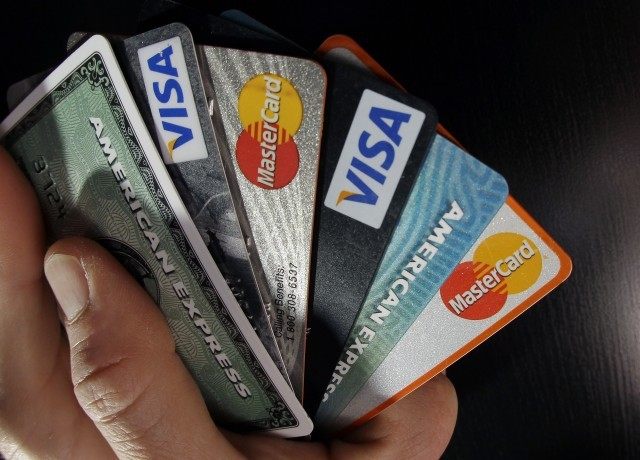The Office of the Comptroller of the Currency (OCC), which regulates the financial risks posed by the lending activity of American national banks, has officially reported that banks are expanding sub-prime credit by raising borrowing limits for credit card holders. The new concerns follow an OCC report last June that flagged “problematic” recent high-risk corporate takeovers, car loans through auto dealers, and commercial finance lending.
Since July of 2013, the OCC has been increasingly concerned with relaxed bank lending standards for certain categories of debt as banks compete for new business in a slow growth and low-interest-rate market, seemmingly more willing to cut their profit margins and take more credit risk.
The Federal Reserve’s January survey of senior bank loan officers revealed some large banks have cut lending qualification requirements for jumbo home mortgages eligible for purchase by both Fannie Mae and its smaller cousin Freddie Mac–both “government-sponsored-enterprises” (GSE). The Fed is also concerned that GSEs recently agreed to buy bank-originated home loans with down-payments as low as 3 percent.
Regulators have good reason to be concerned with bank risk-taking. On November 24, 2008, the Federal Home Loan Finance Agency as the independent regulatory agency responsible for the oversight of $5.5 trillion mortgage market operations of Fannie Mae, Freddie Mac and the Federal Home Loan Bank System, was forced to step in as the conservator of Fannie Mae and Freddie Mac to avoid their catastrophic bankruptcies.
The OCC report tracks credit card users in the three FICO categories: those with super-prime credit scores of 760 and above; prime credit scores of 681 to 759; and sub-prime, which covers about 56 percent of American consumers, according to the nonprofit Corporation for Enterprise Development.
About 24% of the sub-prime group had requested higher borrowing limits in the last year, the Fed loan officer survey showed, compared with about 14% of the middle group and 6% of the top tier.
Credit card firms approved 61% of the requests from cardholders for higher borrowing limits in an October survey. Just 90 days later, the approval rate jumped to 76 percent.
The biggest increase in approvals of higher limits was for a middle tier of cardholders with credit scores of 681 to 759. These customers, considered prime-quality borrowers, were granted increases about 90% of the time, compared with 70% in October. But subprime customers were approved nearly half the time for a borrowing in February, versus only about a third of the time in October.
Almost 4 in every 10 U.S. consumer loans for automobiles, credit cards and personal loans borrowing was issued to subprime customers during the first 11 months of 2014, according to data compiled for the Wall Street Journal by credit-reporting firm Equifax.
The OCC has expressed concerns that with profits squeezed, banks are easing credit card lending standards due to tighter regulatory scrutiny of corporate takeovers, car loans and commercial finance lending. Banks replied to such concerns by noting that credit standards need to be relaxed across-the-board after years of tight restrictions imposed by regulators following the financial crisis.
Banks report that borrowers with a FICO credit score of less than 650 owed roughly $48,000 on average across all debt obligations, including mortgages, as of October 2014. That figure is substantially down from roughly $55,000 in October 2012 and about $61,000 in October 2008.
“Credit card issuers are feeling a lot better about the economy and their position,” Bill Hardekopf, Chief Executive of LowCards.com, a credit card comparison website told the Los Angeles Times. “They want to generate some new business.”
Banks seem especially interested in expanding profitable cardholder issuance to sub-prime customers that expect and are willing to pay much higher interest rates and additional fees. That attitude concerns the OCC and the Fed, who worry that banks seem to have amnesia regarding how the sub-prime crash drove the crisis.

COMMENTS
Please let us know if you're having issues with commenting.